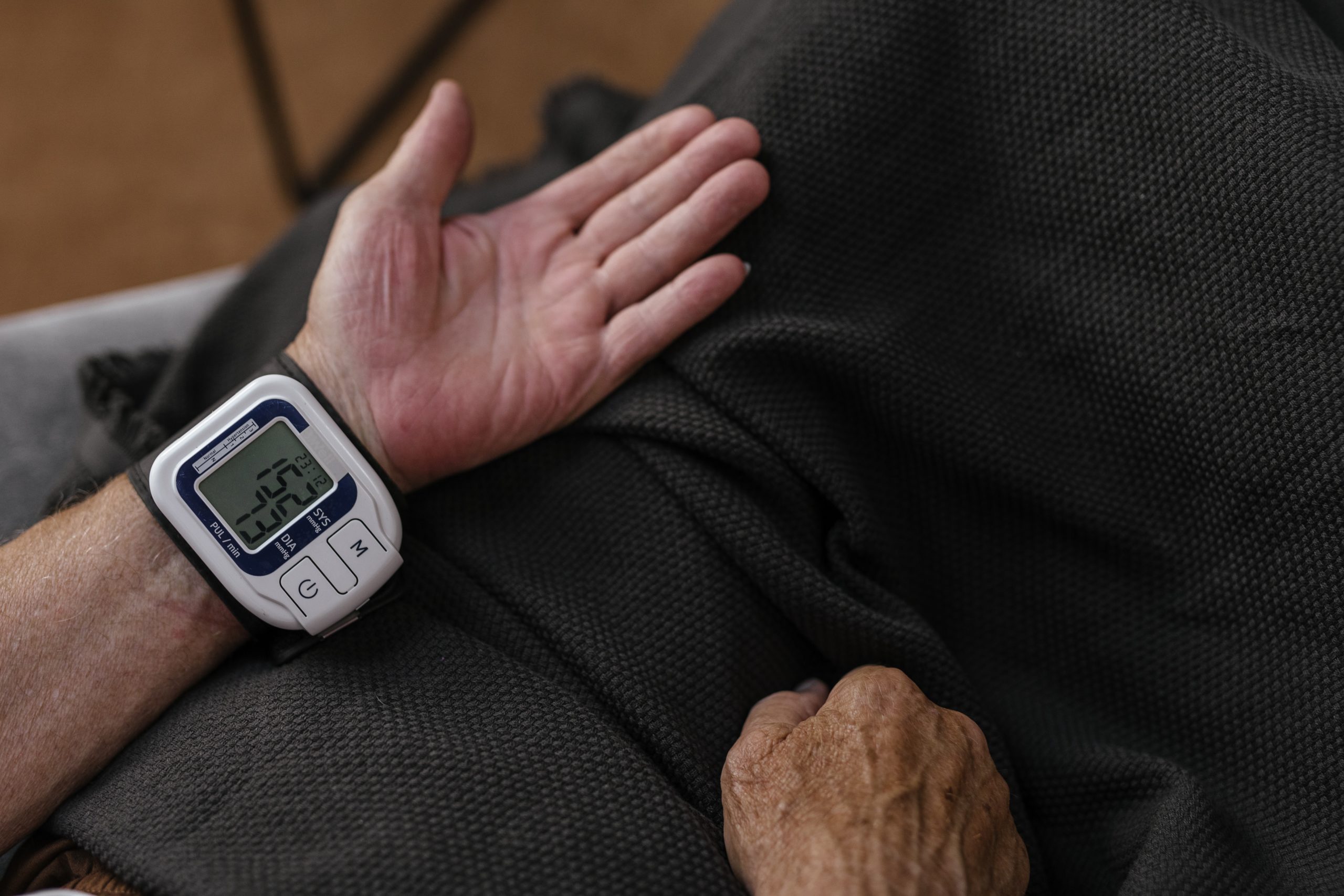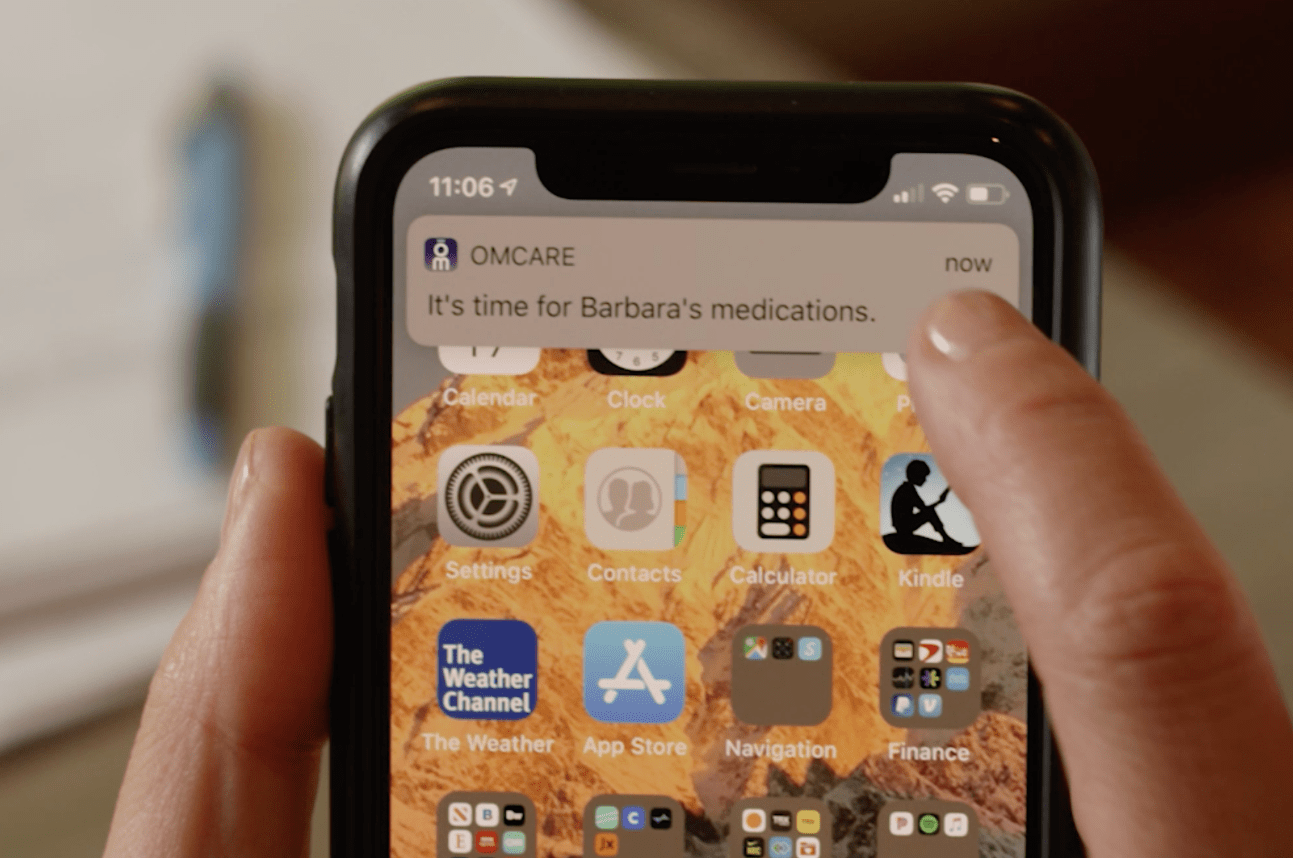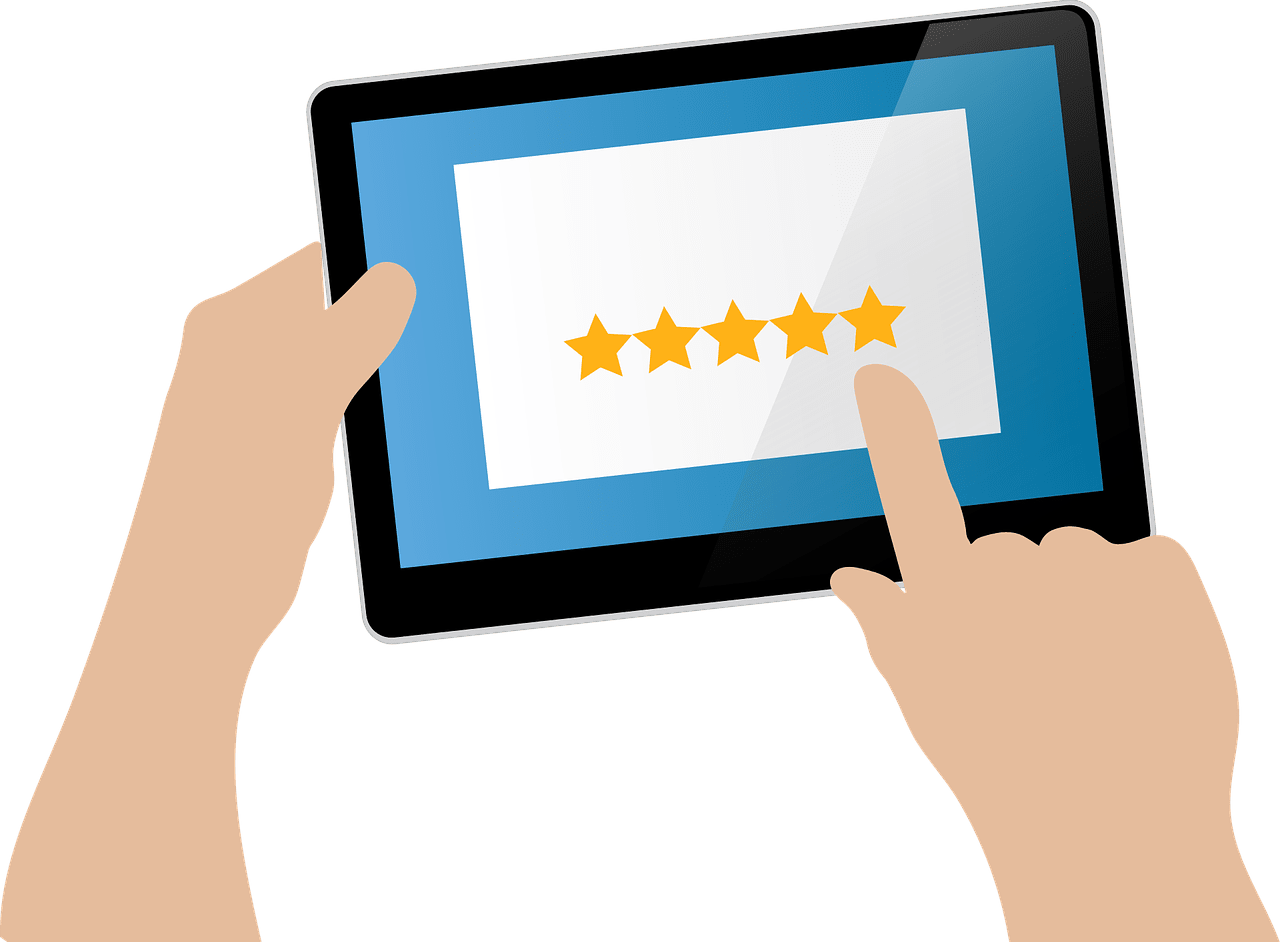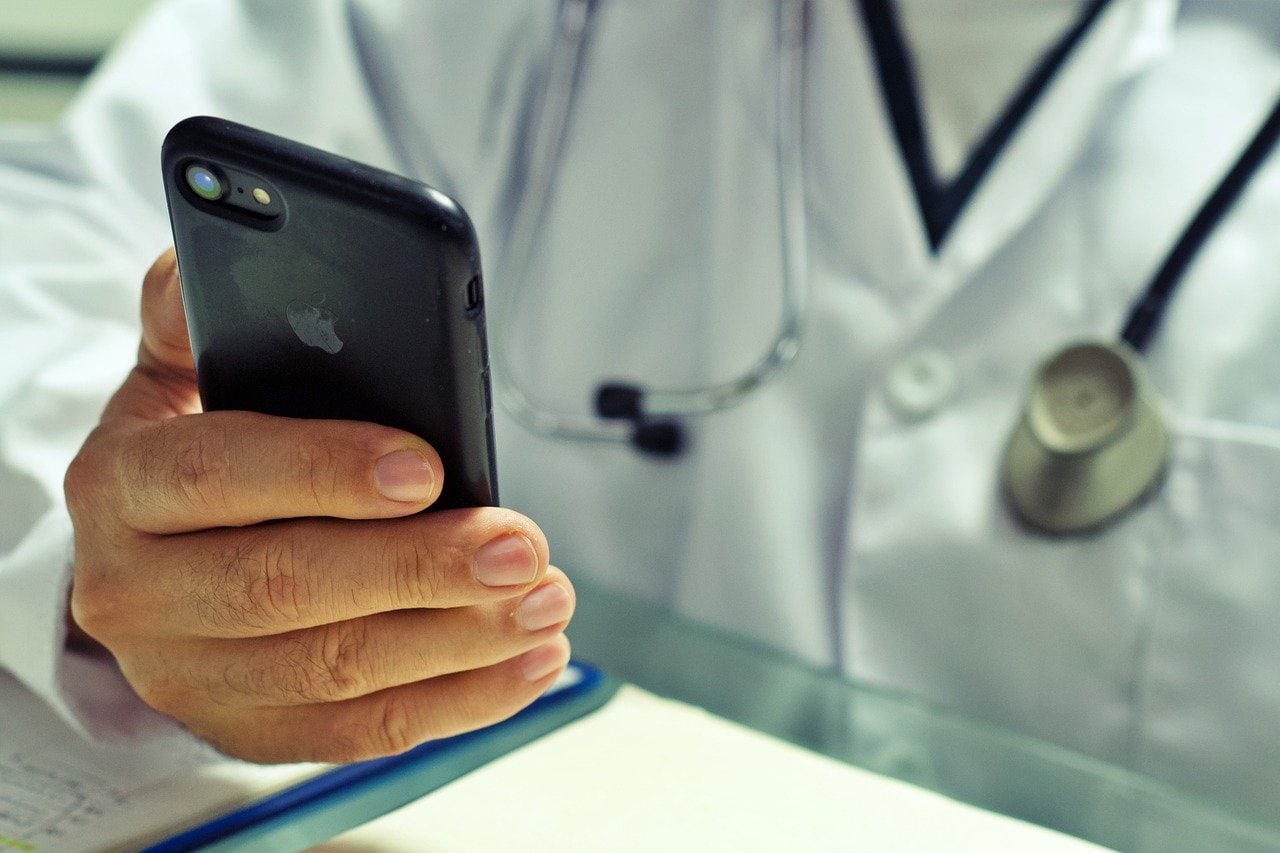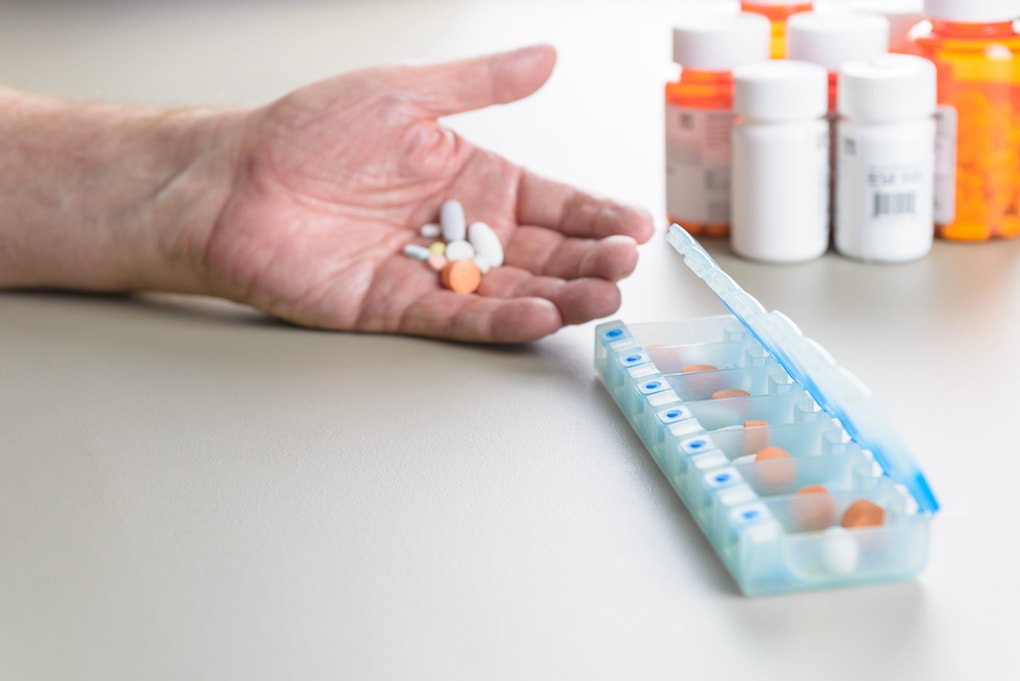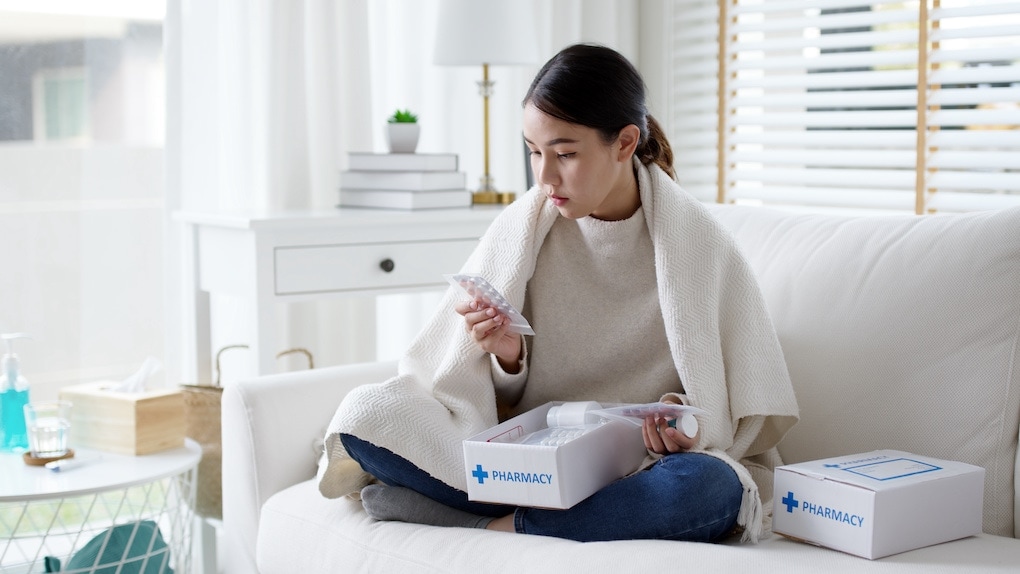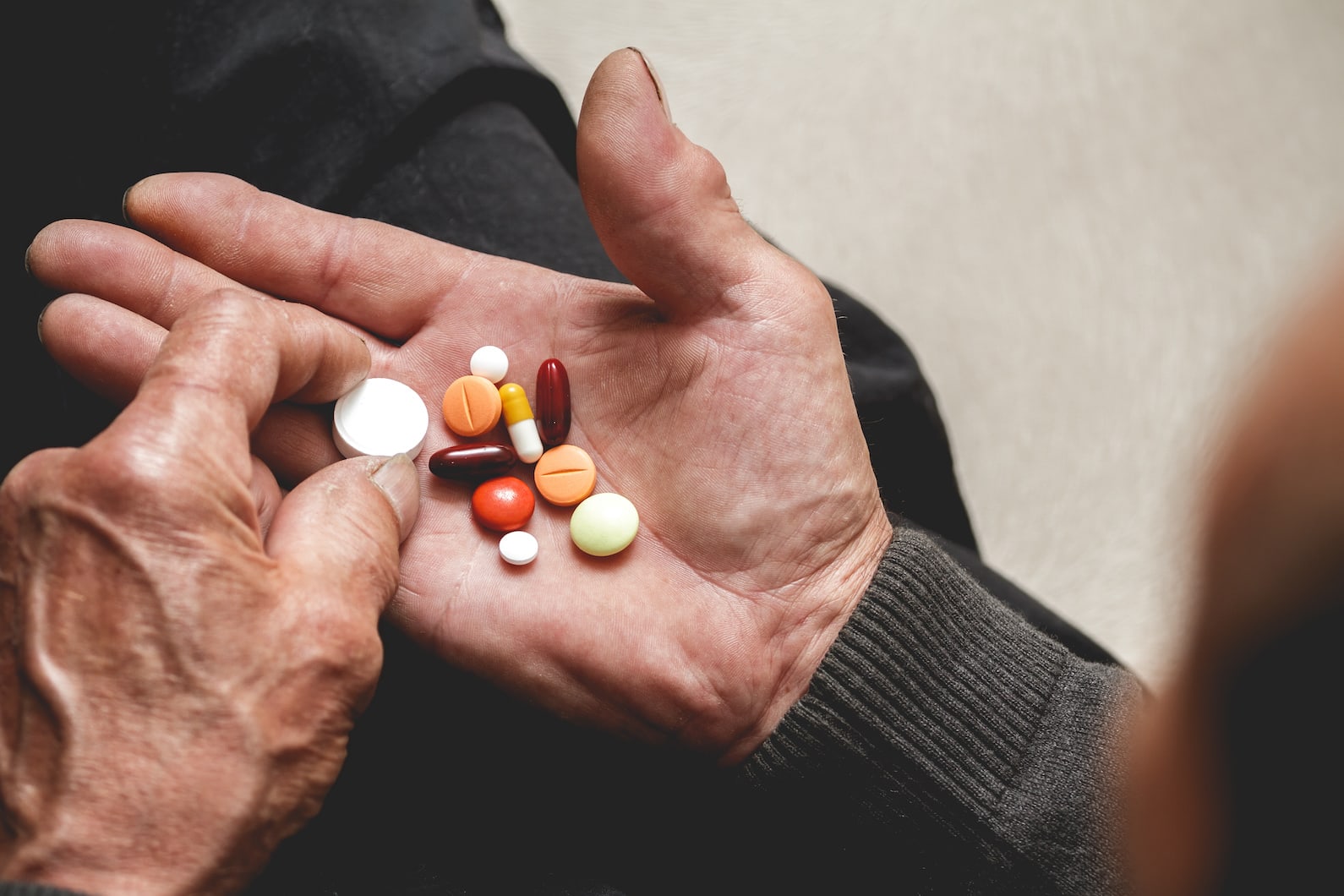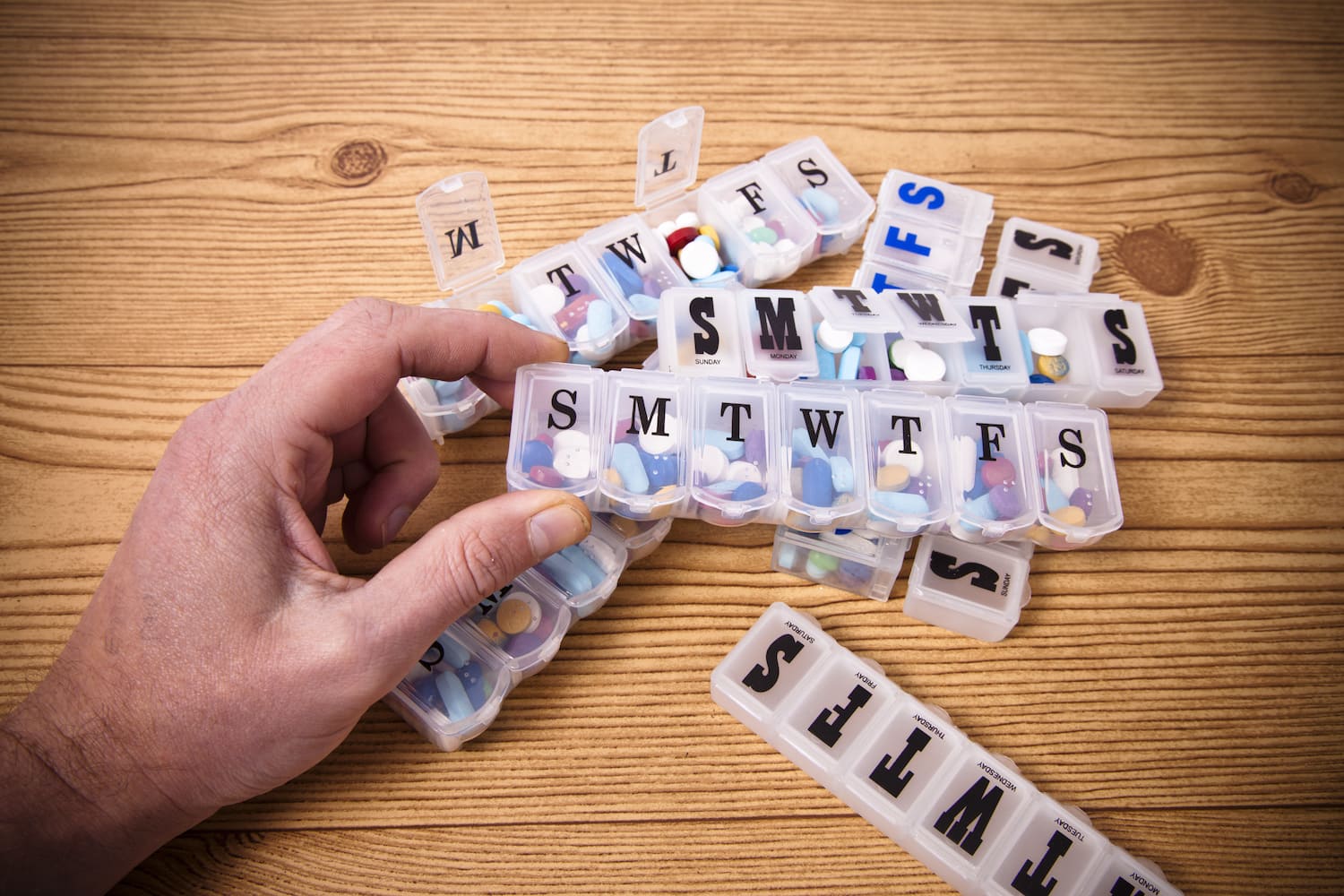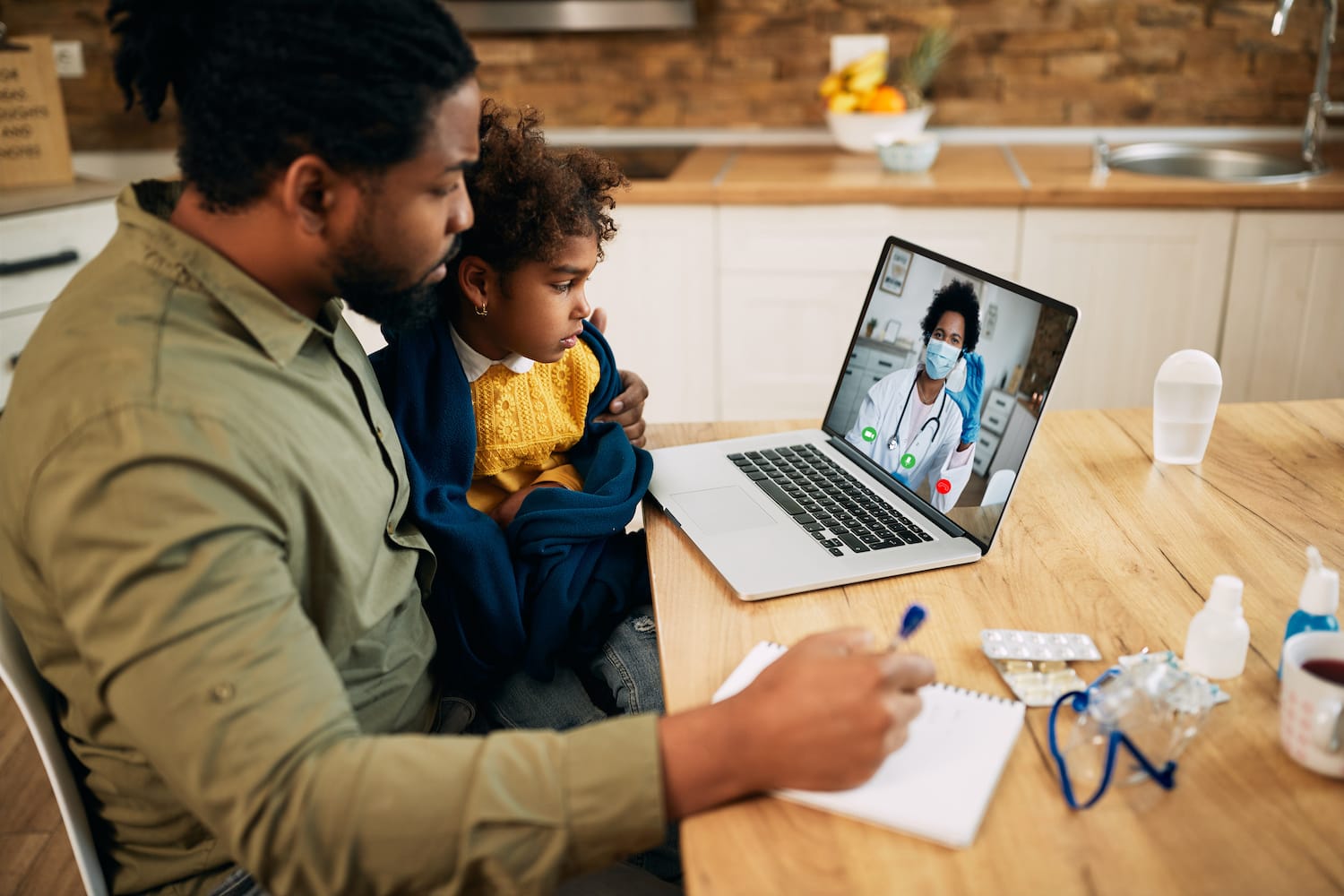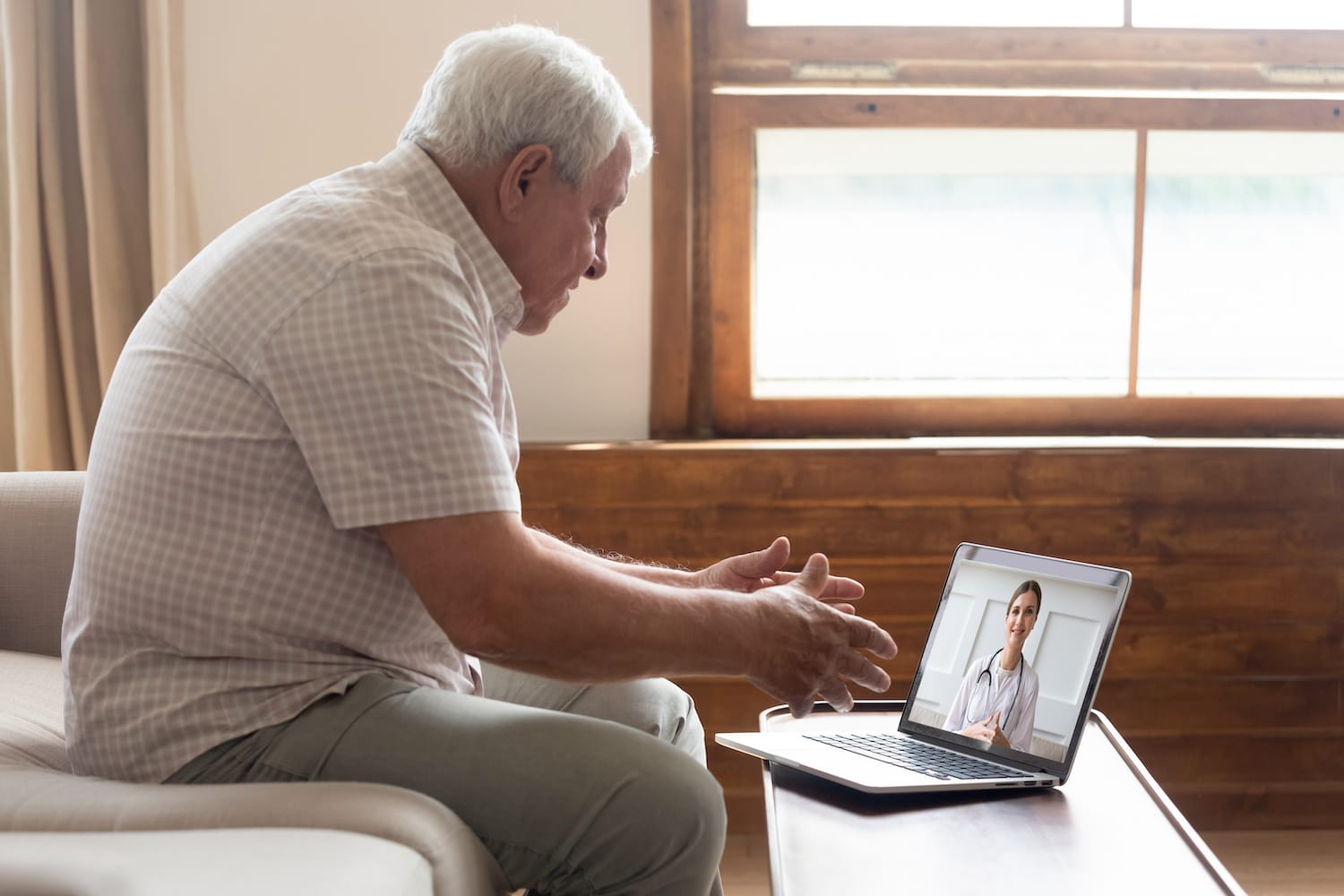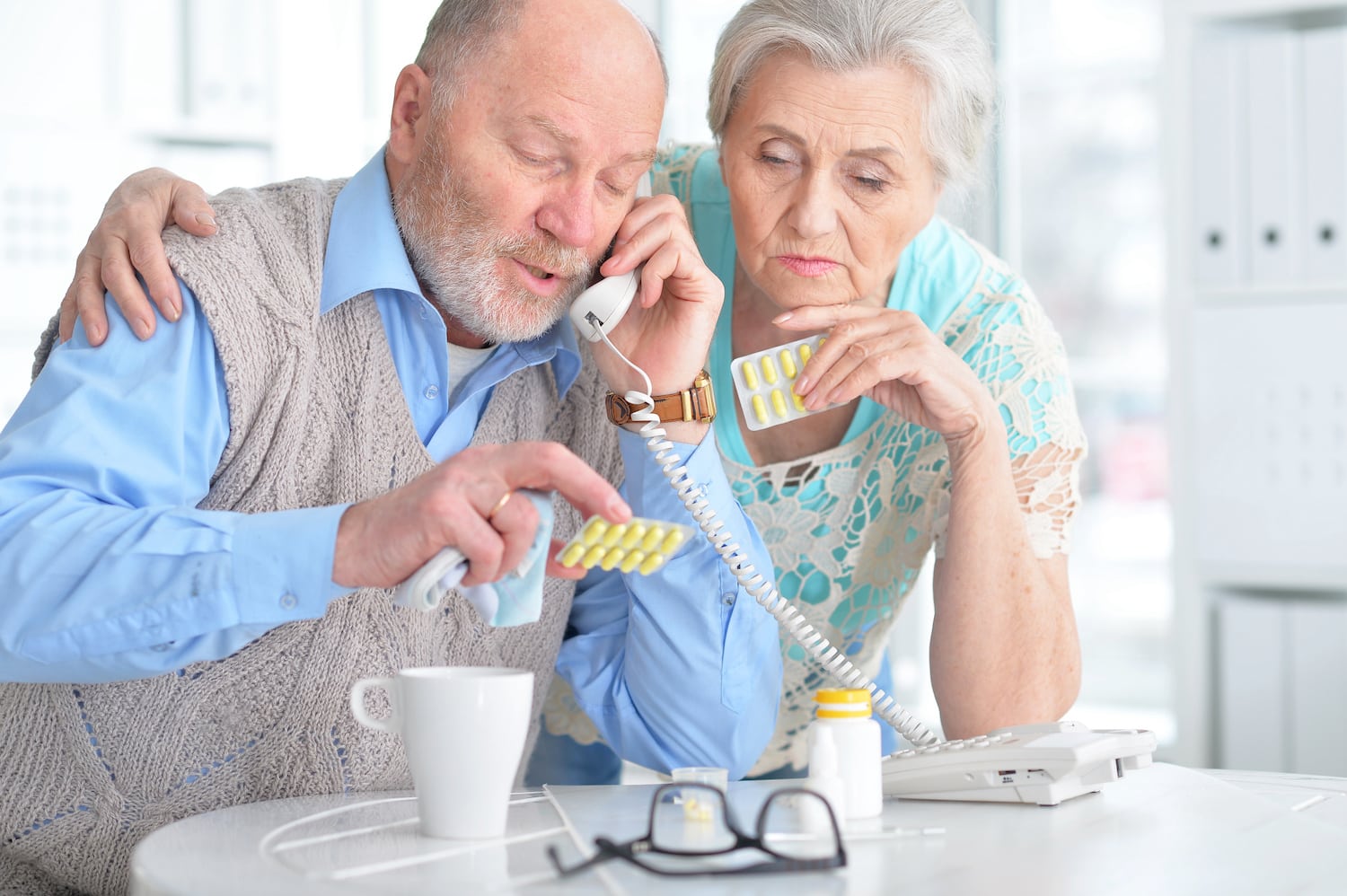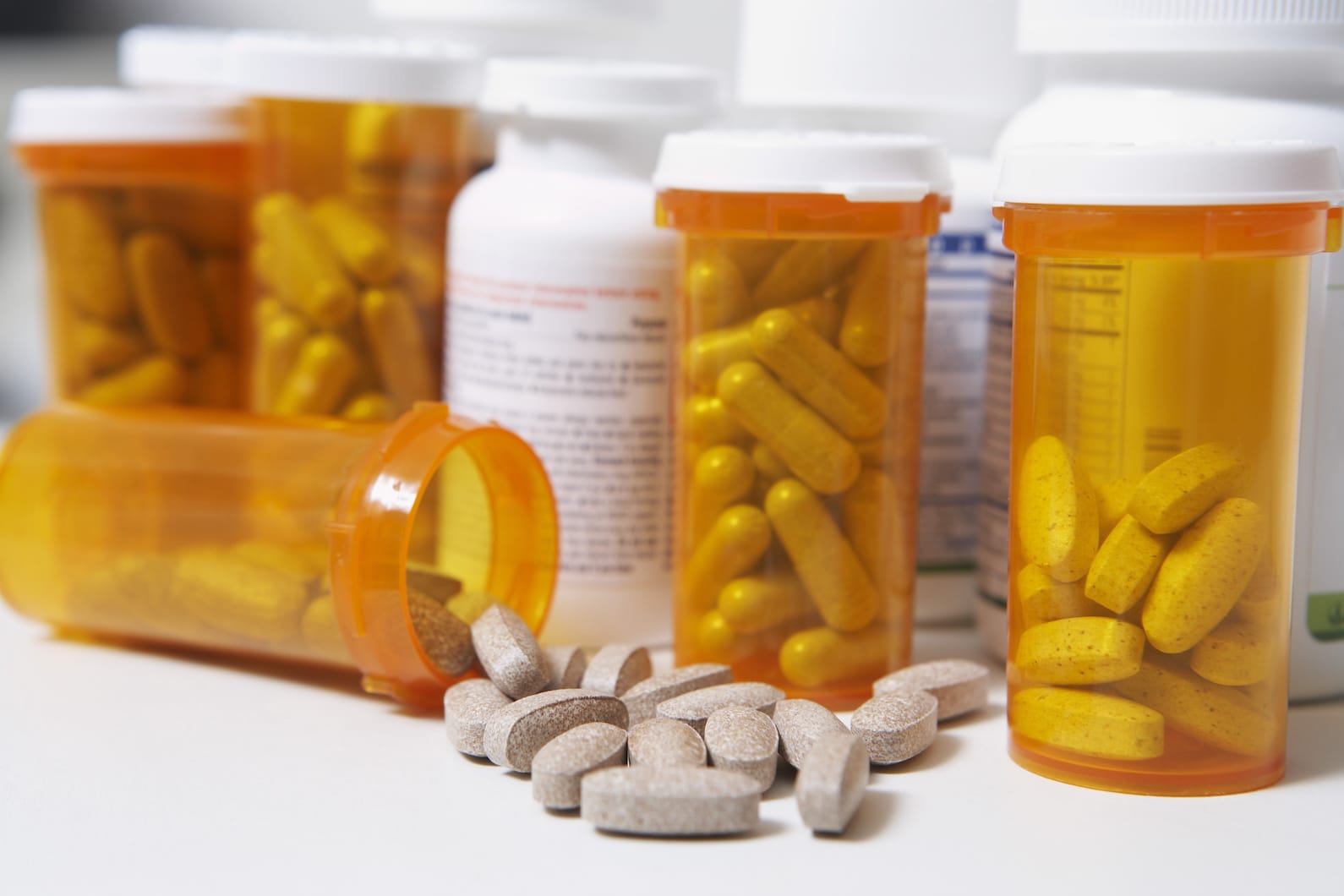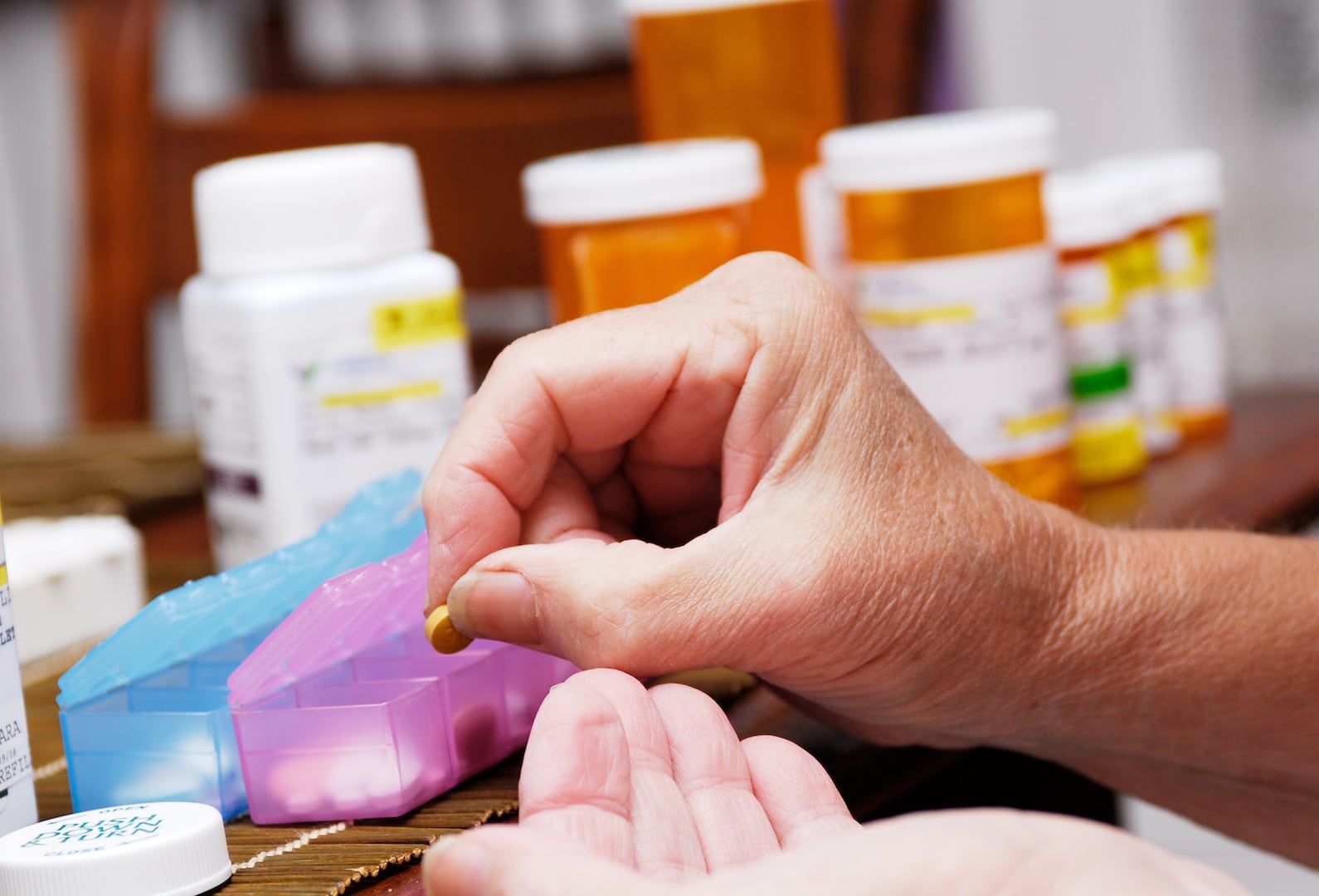Remote patient monitoring for chronic conditions
Gone are the days when patients needed to be monitored in-person. New technology gives patients the ability to live independently, while monitoring their chronic conditions from their own home. It also effectively lowers the cost of healthcare for patients and providers, since less in-person care is needed.
Although any patient can use remote monitoring tools, they are especially beneficial for patients with chronic conditions. The National Center for Biotechnology Information writes, “Chronic diseases are among the most important health problems to benefit from health remote monitoring systems (HRMS).”
What are chronic conditions?
Firstly, what are chronic conditions? These health conditions are defined as ongoing, incurable illnesses and diseases such as:
- Cancer
- Asthma
- Heart disease
- Diabetes
However, although these diseases are incurable, many are usually manageable. Yet, if they’re left untreated, they can be disabling and reduce a patient’s overall quality of life. For example, the American Diabetes Association writes that worldwide, a patient loses a limb every 30 seconds due to diabetes complications.
In order for these patients to avoid complications, their chronic conditions need to be monitored and effectively managed.
What is remote patient monitoring (RPM)?
Remote patient monitoring tracks health and vitals remotely with accuracy 24/7. These technologies gather health data from patients. Here are some examples of RPM tools for chronic conditions:
- Diabetes: Glucose monitor to measure blood sugar levels
- Heart conditions: Blood pressure monitor
- Respiratory conditions: Pulse oximeter to monitor blood oxygen saturation levels
- Obesity: Scale to manage weight loss
These RPM tools often give medical advice based on healthcare data. For example, the technology will provide relevant, helpful content about blood sugar management for patients with diabetes. This automated advice provides added emotional support and health guidance for patients and their families.
RPM can also alert providers if a patient’s data is uncontrolled. The care team can then make changes and updates to the patient’s health plan and medications as needed.
RPM (also known as remote vital monitoring) represents a solution that is effective, convenient, and cheaper for patients. With the help of RPM tools, patients with chronic conditions receive life-saving healthcare, without constant trips to the doctor’s office.
Remote patient monitoring benefits providers
RPM devices can decrease the strain on healthcare providers. Currently, in the United States, 7 in 10 patients die from chronic diseases. While dealing with the COVID-19 pandemic, providers were overwhelmed with an increase in patients with chronic diseases. That, combined with a healthcare labor shortage, makes RPM tools critical to relieving the burden on healthcare providers.
RPM gives providers the space to work on critical patients, until an emergency arises in the remote monitoring data. Until then, the technology can do the heavy-lifting of gathering the data and providing general advice.
Do patients prefer to be monitored remotely?
Many patients with chronic conditions prefer to use RPM to manage their chronic conditions. For example, a MSI International survey found that 43% of patients valued the convenience that RPM offers, while 39% of patients appreciated the efficiency of RPM. 37% of patients felt they had more control over their health due to RPM, and 36% felt more peace of mind thanks to RPM.
The American Heart Association advises that providers should rely less on frequent in-office monitoring, and more on at-home RPM. This gives patients independence, and reduces the disturbance in their daily lives, while making more data readily available.
Drive better outcomes with remote patient monitoring
RPM tools are preferred by both providers and patients. But what about healthcare outcomes? RPM can actually drive even better health outcomes for patients, because providers are more able to diagnose chronic conditions earlier. Patients and providers can then begin building a plan to avoid complications.
Diagnosing chronic conditions early is crucial for many diseases, including hypertension and diabetes. It’s even possible for patients to completely reverse prediabetes, or go into diabetes remission, if their blood sugar imbalance is found early.
Plus, RPM improves how patients manage their chronic diseases. RPM tools increase patient awareness of and engagement with chronic condition therapies and management strategies. For example, when patients are able to closely monitor their glucose levels, they can make more informed decisions moving forward.
Ōmcare contributes to chronic condition management
Ōmcare is a telehealth device that helps patients and providers manage long-term, chronic conditions. We’ve got your logistics covered; everything from medication delivery to regular, remote check-ins. Our Ōmcare Home Health Hub is easy to use and manage, for both patients and healthcare providers. Looking for a solution that is accessible anywhere you are? Don’t hesitate to reach out to Ōmcare today.
Assistance options for seniors living at home (that actually work)
As Americans age, health challenges make it harder and harder for them to live empowered and independent lives. A lot of older people want to stay at home, but they need specialized healthcare to do so. Staying at home with the help of workers isn’t always a viable option, especially considering the cost of those services.
But what if we turned to technology instead? 54% of doctors and patients said technology can reduce healthcare costs. Plus, digital health technologies are predicted to reduce the cost of healthcare in the U.S. by about $305 billion. A huge part in that reduction is among older people adopting age-tech to lower their expenses.
However, choosing the right technology options is challenging. Making poor healthcare decisions leads to wasted money and health risks. This blog post was created to help you sort through the best age-tech solutions in the market.
3 assistance options for seniors living at home
1. Medication alerts
Poor medication adherence can cause a host of problems such as complications and diseases. It also decreases function, ability to live independently, and quality of life. Plus, it causes increased treatment costs due to the increased use of expensive and specialized medical resources, and often increases the length of the patient’s hospital stay. Finally, it causes unnecessary medication changes.
Making medication adherence worse, many elderly patients are taking a long list of medications to manage long-term health conditions. 44% of men and 57% of women older than 65 years take 5 or more medications per week. 12% of patients in this age group take 10 or more prescriptions per week. This is an issue, because 50% of patients don’t adhere to chronic medications.
When it comes to situations where patients are struggling with Alzhiemer’s or Dementia, remembering to take medications is nearly impossible. To encourage positive healthcare outcomes, technology helps elderly patients adhere to their medication.
The first step to keeping a senior on track with their medication is to make sure they're organized. A daily pill dispenser is the most important tool for this job. These devices organize pills into individual containers that are marked by day and time. At the designated hour, a reminder goes off, prompting the senior to take the proper pills according to their prescribed dosage.
A good pill dispenser will have an alarm system that accounts for when a dose was or wasn't taken, but not all systems are created equal. Some are error-prone, while others aren't reliable enough to be trusted with someone's health. The best pill dispensers will also have automatic notifications sent out if there's no response after the alarm has gone off several times in a row.
Ideally, a pill dispenser can be combined with other in-home caregiving systems. Other apps can be used to send reminders to patients to help them adhere to long-term medication schedules.
2. Health monitoring
How do we create an environment where we drive positive healthcare outcomes? We need to make sure we're measuring things we want to measure, and taking care of them when issues arise. Great technological tools exist to track senior health accurately and handle problems effectively.
These tools monitor the patient’s metrics, such as blood pressure, 24/7 in real-time. Plus, these technologies can often give medical advice based on data from other devices. As of May 2020, 39% of family caregivers considered remote monitoring to track an elderly patient’s health.
When picking what tools to choose, focus on the ones that are specific to the patient's needs. For example, a patient with diabetes may not need any blood pressure monitoring. They need blood sugar monitoring. Also, doctors can recommend specific health monitoring tools for the patient.
3. Mobile medical alerts
Another option for older adults who wish to remain living at home is the mobile medical alert system. With the help of this technology, older adults can have access to emergency services 24/7.
Mobile alert systems may take the form of a wearable device or an app on a smartphone. They are designed to keep seniors safe no matter where they are. The devices often also include two-way communication, so that seniors can reach out if they need assistance.
If your loved one is prone to falling or has dementia, a mobile alert system may be the best choice for them, and it will allow them freedom from being constantly supervised by a caregiver. For example, Lifeline offers a medical alert service that allows users to press a button or two on a device that can be worn as a necklace or bracelet. Pressing the buttons sends an alert to either the user’s loved ones or emergency services and it comes with location tracking so that help can find them quickly if needed.
There are home care options that combine technology and real people.
The best options for home elderly care combine technology with an in-person caregiver. 53% of elderly patients said they prefer their healthcare to include a mix of medical staff and technology.
The advantages are numerous:
- Patients can live at home, rather than in a care facility, and still receive wide-ranging support.
- One caregiver can take care of multiple clients from different locations, saving time and money for everyone involved.
- If there's a medical issue, technology allows caregivers to respond quickly to the patient’s needs—without having to be present in person.
Need a healthcare solution that actually works? Our Ōmcare Home Health Hub® is your answer. It’s a video-based solution that allows elderly patients to manage their healthcare needs remotely. They can receive medications and speak with their providers, pharmacist, or caregivers in real-time. Reach out to Ōmcare to learn more!
Creating empathy through technology for the aging population
Empathy is not just a “nice to have” in healthcare—it has been shown to have strong positive effects on health outcomes. Additional research shows that empathy and compassion are associated with:
- Better adherence to medications
- Decreased malpractice cases
- Fewer healthcare mistakes
- Increased patient satisfaction
Empathy is especially important when caring for the aging population. As people grow older, their needs increase. They become increasingly vulnerable, and it can be difficult or uncomfortable to explain their needs. They may even hesitate to explain symptoms to avoid being a burden on caregivers.
As technology continues to grow as an option to provide care to the elderly, it’s important to foster empathy through the screen. Creating empathy through technology is certainly challenging, but for age-tech to succeed, it’s essential.
How to create empathy through technology for the aging population
1. Provide telehealth options connecting older patients to their healthcare providers.
Although it is harder to give patients the sense of personal care through technology, there’s also a unique opportunity for them to be more connected to their healthcare providers than ever before. Technology can maintain and improve the relationship between clinicians and patients.
Where patients did not have easy access to their healthcare providers in the past, now, they have healthcare technology to foster connectedness. Real-time chats allow patients to ask their doctor a question, ask for a refill, or so many more, all from the comfort of their own home.
Virtual appointments and consultations, portals giving access to health data, and group chats for sharing information all create connections.
2. Think about empathy beyond the typical doctor-patient relationship.
Although empathy through technology takes extra effort and thought, if done correctly, it may actually allow providers to be more empathetic. Technology transforms the typical doctor-patient relationship.
“We need to make ourselves available to them in ways that are perhaps sometimes not always possible when we're in the hospital setting,” says Kathy Sienko, OBE, the chief nurse at King Faisal Specialist Hospital and Research Center. “Giving them access to information, incorporating online information and other sources of data into the way that we deliver care, in ways that we have not been able to do before, or haven't been motivated to do before.”
Technology allows providers to go beyond the typical patient-doctor relationship. Sharing increased information during times of illness, uncertainty, and aging is a powerful way for doctors to demonstrate empathy for patients and their families.
3. Expand your perception of empathy.
Empathy is usually thought of as an understanding between two people, but empathy can go far beyond doctor and patient. An organization can embody empathy and be embedded within the patient experience.
Empathy can be as simple as designing apps that ease the stress of booking appointments. The “intersection between empathy and innovation and how they should be deeply intertwined to be maximally effective,” says Adrienne Boissy, MD, MA, chief experience officer at the Cleveland Clinic. “The experience of care, what does that need to feel like and how can we redesign things to make people feel cared about, and valued, and known, by an organization?”
Especially when it comes to senior populations, who might have more trouble accessing technology, the user experience is a priority. Technology can drastically improve their healthcare. However, if it’s too challenging to use, then that care experience is not empathetic and ineffective.
4. Empathy for clinicians helps patients.
The same healthcare tools that can be used for elderly patients can also be used to benefit clinicians. This is especially important, because clinician burnout is on the rise. Caregiver burnout leads to mental and physical health problems.
“In the face of the unprecedented challenges created by the COVID-19 pandemic, the nation must acknowledge the toll that the crisis is taking on the well-being of clinicians,” writes the National Academy of Medicine. “Health care workers need support as they navigate the difficult challenges of the current moment and throughout the long-term effects of COVID-19 on clinicians.”
Technology can provide empathetic support for clinicians. For example, virtual communication allows clinicians to connect with others in their field experiencing the same struggles. Wellness tools, such as Headspace, benefit the mental health of clinicians.
Also, allowing clinicians to provide telehealth helps them avoid burnout by saving them time. On average, physicians who use telemedicine reduce visit times by about 20 percent. This gives them more time throughout their day and alleviates stress.
When clinicians are less burned out, they are better able to offer empathetic care and drive positive health outcomes for the elderly population.
Technology improves older patient and clinician health
Rather than thinking of how challenging it is to be empathetic via technology, think of virtual healthcare as the ultimate tool. Our Ōmcare Home Health Hub® can help you provide an empathetic healthcare experience for the older generation. It allows an easy way to ensure patients are adherent with their medications and speak with providers in real-time. Reach out to Ōmcare to learn more today!
2022 changes for Star Ratings & how this affects your telehealth strategy
Every year, the Centers of Medicare & Medicaid Services (CMS) releases Star Ratings to determine how well Medicare plans perform. These ratings have big implications for plans including how members enroll. The system supports CMS’s efforts to empower people to make healthcare decisions that are best for them.
As for providers and plans, the factors that influence Star Ratings, and how heavily they influence them, change annually. Just when you have it figured out, they change again. This blog post explains the 2022 changes for Star Ratings, how these changes affect your telehealth strategy, and how to move forward into 2023 and 2024.
What are Star Ratings?
Plans are rated on a 1-to-5 scale, with one star representing poor performance and five stars representing excellent performance. When a plan is rated higher, more people enroll in it for a variety of reasons.
Star Ratings are based on:
- Staying healthy: How well does the plan keep members healthy through checkup reminders and communication?
- Managing chronic conditions: How well does the plan help members get recommended tests and treatments for their condition?
- Member experience: How do members rate their experience with the plan? This includes the care they receive from doctors and getting prescription medications.
- Member complaints and performance: How often do members find problems with the plan? How has the plan’s performance improved each year?
- Customer service: Does the plan have foreign language interpreters and teletypewriter (TTY) services available? Does the plan process appeals and new enrollments in a timely manner?
These categories are the main factors determining Star Ratings. However, there are other factors determining Star Ratings that change.
Keep reading to learn how 2022 Star Ratings differed from the past, and what factors influenced these changes.
2022: A record-breaking year for Star Ratings
2022 was a record-breaking year with the highest number of 4- and 5-Star Ratings. In 2022, there were more 5-Star plans than 3-Star plans.
The first reason for the increase in Star Ratings is the “better of” methodology. This change allowed plans to report data from either the 2021 or 2022. Plans had the benefit of choosing whichever year had the better data. The “better of” methodology will no longer be allowed, which means we can expect a drop in Star Ratings in the coming years.
Plans need to prepare for the future, because the CMS Star system will correct from COVID, leading to a significant loss in 4- and 5-Star Plans. Aside from the “better of” methodology, there were several other changes to 2022 Star Ratings.
Most influential change to Star Ratings in 2022: CAPHS Weighting
In 2022, Star Ratings continue to place an emphasis on member experience by having an increased importance and weighting. Consumer Assessment of Healthcare Providers and Systems (CAHPS) scores are shifting from two times to four times weighting.
CAPHS scores are often the lower performing category for health plans. Yet, in 2022, it becomes the highest weighted in the Star Ratings. Here is a breakdown of the CAPHS measures affecting Star Ratings:
- Getting needed care
- Getting appointments quickly
- Customer service
- Rating of healthcare quality
- Rating of health plan
- Care coordination
- Rating of drug plan
- Getting needed prescription drugs
Member experience was by far the most important change in 2022 Star Ratings, and this trend will continue in the future.
More changes to 2022 Star Ratings
In 2022, the plans that scored the highest were those that showed improvement in these measures:
- Transition of Care (TRC): This measure assesses post-discharge transition from inpatient facilities.
- Medication adherence for chronic conditions: How well did the plan help patients get medications? Did the plan include refill reminders?
- Preventive services: Did the plan have the ability to reach members digitally and in a timely manner?
- Chronic conditions: Members with chronic conditions often have compromised immune systems, making them more fearful of contracting COVID-19. Did the Plan increase the use of test kits, in-home services, and mobile unites to accommodate those with chronic conditions?
- Blood pressure: Did plans engage members with uncontrolled blood pressure?
In 2022, the Star Ratings removed the Health Outcome Survey (HOS) measures. Before, they had a 3x weighting.
The removal of the HOS measures boosted most plans’ ratings, and this change will last for at least the next 3 years.
Moving forward: Stars Ratings in 2023 and 2024
2022 Star Ratings were already solidified, meaning from now on, plans need to focus on Star Ratings for 2023 and 2024.
Here are the changes we’ll see for 2023 Star Ratings:
- CAPHS: Member experience weights increase to 4x for 2023.
- Health outcomes survey (HOS): 3x-weighted HOS measures won’t be counted for the next 3 years.
- Controlling blood pressure (CBP): CBP continues to be included in 2023 Star Ratings after methodology updates with a 1x weight.
In 2024, here are the Star Ratings changes to be aware of:
- Plan all-cause readmissions (PCR): This measure will return to the Star Ratings program with changes in 2024. PCR assesses the rate of adult acute inpatient observation stays that followed an unplanned acute readmission for any diagnosis within 30 days after discharge.
- Transitions of care (TRC): This measure assesses post-discharge transition from inpatient facilities with 3 new indicators.
- Follow-up after emergency department visit for people with multiple high-risk chronic conditions (FMC): This new measure tracks the percentage of adults with multiple high-risk conditions who had a follow-up service within 7 days of their visit.
The 2023 and 2024 changes to Star Ratings reveal trends to keep an eye on for the upcoming years. Now that you understand 2022, 2023, and 2024 changes to Star Ratings, we’re going to unpack how these changes impact your telehealth strategy.
How these changes impact your telehealth strategy?
By far the most important factor are CAPHS member experience measurements. How does telehealth impact member experience? Virtual visits have a higher patient satisfaction rate of 97%. In contrast, in-person visits have a 84% satisfaction rate. Just by offering telehealth services, a plan may be able to improve its Star Ratings.
When offering virtual visits, here’s how to improve patient satisfaction rates:
- Move as many experiences to virtual as possible, including prescription refills, ordering future screenings, assessments, medical recommendations, pain screenings, and depression screenings.
- Offer a Digital Mock-CAPHS Survey to better understand and improve member experience.
- Focus on how to use telehealth to improve other Stars measurements. For example, offer telehealth monitoring of blood pressure to monitor patients.
One key to improving member experience and providing higher touch care to more patients is to digitize medical services, when appropriate.
Need help providing telehealth?
With Star Rating improvements relying so heavily on telehealth, plans need to make sure their digital strategy is in great shape. Just like any other tool, there are great telehealth tools, and there are some that will just further frustrate members.
To help improve your telehealth services, rely on our Ōmcare Home Health Hub®. It ensures patients can get their medicine and speak with their providers, pharmacist, or caregivers in real-time. Reach out to Ōmcare to learn more!
Virtual healthcare: The ultimate guide for 2022
As times are changing, so is the field of medicine. 71% of healthcare providers are already using virtual healthcare tools in their practice. Whether your practice is currently providing virtual medicine, or just stepping into the space, we’ll explore how to develop a stronger telehealth strategy for 2022 and beyond.
What is virtual healthcare?
Virtual health, also known as telehealth, are all-encompassing terms that include a range of technologies and services to provide remote medical care. It means interactions between doctors and patients become virtual. And although it’s often thought of as just video visits, virtual care includes messaging, apps, and phone calls.
To access virtual healthcare, patients generally need internet and a smartphone or laptop. In some instances, patients might need advanced technology, such as a blood pressure monitor.
Virtual healthcare can be used for at-home diagnosis, patient aftercare, or simple personal monitoring.
Skeptical of telehealth? Don’t be. 82% of patients say that a virtual appointment is as effective as an in-person visit.
The importance of telehealth in 2022
Telehealth gained rapid popularity in 2020 due to COVID-19. Especially for high-risk patients who needed ongoing care, telehealth was the best option as it limited potentially life-threatening exposures to COVID-19.
Going into 2021, online healthcare became the new normal. 64% of U.S. households used telehealth in 2021. Now, many patients actually prefer telehealth. And there are a variety of reasons including:
- It can decrease healthcare costs
- It saves travel time
- It increases accessibility in rural areas
Out of all the reasons to choose telemedicine, convenience and infection control are the top reasons patients choose telehealth.
Virtual healthcare provides benefits for your practice, too. It saves time for healthcare workers, allowing more patients to be seen and treated. Plus, it limits occupational exposure to COVID-19.
Although virtual healthcare became popular due to COVID-19, 43% of Americans want to continue using telehealth even after the pandemic.
3 types of telemedicine
While telehealth is an all-encompassing term, telemedicine is more specific. Telemedicine is the remote diagnosis and treatment of patients using technology. There are 3 types of telemedicine:
Store and forward
The data and signals are received from the patient and passed straight to a system. Asynchronous capture and transmission of images, videos, and sound—for example, patient sends a photo of their wound.
Remote patient monitoring (RPM)
This is using technology so patients can automatically monitor activity and pass on data to healthcare professionals. For example, monitoring and transmission of vital signs, including blood pressure or glucose levels.
Interactive patient care (IPC)
This includes virtual consultations and one-to-one live chats, phone calls, or video chats. It’s any communication between the healthcare provider and their patient.
Keeping the meanings of telehealth and telemedicine in mind, keep reading to learn how to navigate telemedicine in 2022 and beyond to achieve success!
Virtual healthcare guide for 2022
How to get started
If your practice is just starting to enter the realm of telemedicine, don’t feel pressured to jump all-in to telemedicine right away. We’ll be outlining more advanced tips throughout the article, but if your practice is just getting started, here are some tips:
- Utilizing free trials or pilots helps you try different options before committing.
- Check insurance coverage before making big investments.
And most importantly: Start off modestly. To see if telemedicine is right for your practice, try:
- At-home STI testing
- At-home food sensitivity tests
Pick the right platform or app
Telemedicine is reliant on technology, but you have options. There are plenty of healthcare apps on the market. Choose the right one for your practice.
It makes sense to have a specific platform or app for your practice, because generic platforms like Google Hangout and FaceTime could lead to costly HIPAA breaches. In 2020, HIPAA regulations were loosened to include these generic platforms, but they’re not the best choice. It’s also anticipated that these loosened restrictions won’t stick around forever. So, it makes sense to invest in a HIPAA compliant platform now.
Consider using apps specifically made for telehealth, for example: Teladoc, MDBox, or AmWell. When looking for a telehealth app, look for apps that offer:
- Easy/seamless integration
- User-friendly, intuitive design
- Specialty care solution
- Customization
- Data analytics
Protect patient information
Even when you have a secure app, patient privacy is still a top priority.
To protect patient information, virtual healthcare providers need to know local, state, and federal telehealth regulations, and abide by them. Since these laws are constantly changing rapidly, use resources such as the Center for Connected Health Policy to stay on top of regulations. You can also provide extra privacy training for telemedicine providers.
When it comes to telemedicine, patients need to be knowledgeable. Inform patients of the risks that come from using telehealth. Also, teach patients their own responsibilities when it comes to protecting their data.
Know when it is most appropriate to use telemedicine
Here are examples in which telemedicine is often used:
- Chronic diseases
- Primary care
- Surgical care - pre- and post-appointments
- Mental health
- Pharmacy services
- At-home testing (STIs, genetic testing, hormone testing, and more)
But telemedicine is not the answer in every case. For example, it’s not an appropriate option when a hands-on physical examination is crucial to deliver the best care.
An area where telemedicine isn’t often used, but can be leveraged, is addiction recovery. Adoption of telehealth technologies in substance abuse care was found to be less than 1%. Telemedicine could especially help reach patients in rural areas that don’t always have the same access to care or support.
Providers need to develop a “webside” manner
Just because you’re not seeing your patients in-person, doesn’t mean acting with care isn’t necessary. Although it’s harder to be personable in virtual medicine appointments, it’s still a necessity. To develop a “webside” manner:
- Maintain consistent eye contact with the camera
- Set up quality lighting
- Provide services in a professional environment, dressed professionally
- Reduce background noises & visual distractions
Telemedicine can be just as effective as in-person visits, as long as telemedicine providers provide empathy to their patients and cater to their needs, just as they would in-person.
Doctors need to engage the patient as a partner
When it comes to telemedicine, doctors need to be able to engage the patient as if they were a partner. The patient is no longer passive. For example, healthcare providers may need to talk patients through how to use healthcare tools. They may also need to explain how to set the camera up so the doctor can see what they need to see.
Virtual visits should be seen as a collaboration between both parties more than ever before. For success, patients need to feel comfortable, especially because they are often allowing the provider into their home.
Focus on strengthening patient access
Not all patients have access to telemedicine. To create a great telehealth practice, focus on strengthening patient access.
For patients lacking technology, suggest sources such as the Lifeline program, which provides low-income individuals with free or low-cost devices.
Be aware of telehealth disparities, and don’t assume that certain people won’t accept telehealth services. This unconscious bias affects how many people can take advantage of telehealth. 28% of patients don’t choose telehealth services for their kids, simply because it was never offered to them.
Continue addressing other telehealth obstacles. For example, when you face a language barrier, use a translator in 3-way video calls.
Ōmcare can help improve your virtual healthcare
Telehealth promises better convenience, access, and affordability. By providing new approaches to delivering care, telehealth can ultimately help patients around the world maintain a healthier lifestyle.
While there is much promise in telehealth, it’s important to prioritize best practices of virtual healthcare. Our Ōmcare Home Health Hub® ensures patients can get their medicine and speak with their providers, pharmacist, or caregivers in real-time.
If your practice is looking for a tool to help implement or improve your virtual healthcare strategy, reach out to Ōmcare for more information.
4 telling medication adherence statistics (updated for 2022)
Around 66% of people in the United States take at least one prescription medication. The average number of prescriptions taken is 4 per person, but that number rises significantly for those treating chronic conditions. Regardless, medication is one of the largest expenditures in the healthcare industry to date (over 10% of all healthcare spending).
With patients shelling out money, one might assume people manage their medications well and always take them on time and in the right dose. However, this is certainly not the case.
It's estimated that just half of the people who are on regular medication take the proper doses at the proper times. Taking medications appropriately is called medication adherence, and it's a critical detail that can gauge the success of treatment. It is a metric that doctors and healthcare plans are always striving to improve.
Throughout the pandemic, there have been a lot of shifts in the healthcare industry—from embracing more telemedicine to making changes to care plans due to limited access to in-person appointments. Because of this, we've discovered some astounding medication adherence statistics and how it's changed or will change, in the coming years.
https://youtu.be/Qh84l557-D0
4 Telling Medication Adherence Statistics
The top reason for medication non-adherence is forgetfulness
In the last decade, Express Scripts ran a multi-year pilot study to figure out the main cause of medication non-adherence. They went into the study thinking cost and accessibility would be the biggest reason: they were wrong.
They found that of the 600,000 patients, 39% simply forgot to take their meds, 20% did not renew scripts on time, and 10% put off refills resulting in multiple missed doses.
Over 125,000 premature deaths per year caused by medication non-adherence
In 2014, non-adherence was the 6th most common cause of premature death in America. That's an incredible, and expensive, statistic. These preventable hospital visits, stays, and deaths cost the healthcare industry hundreds of billions of dollars per year.
Over half of patients with mental illness are non-adherent
Statistics show that between 40 and 60% of patients who are mentally ill have poor medication adherence and rarely take their medications on time, if at all. Uncontrolled mental illness lead to the climbing rates of unemployment, homelessness, and suicide which sits in the top 10 causes of death in the United States.
Better adherence could help prevent 89,000 hypertensive deaths
Hypertension puts you at risk for heart disease and stroke which continue to sit in the leading causes of death among American adults. Treatment for hypertension includes lifestyle changes like diet and exercise but also critical medications that help lower blood pressure. Nearly 50% of Americans have improperly medicated hypertension. This highly preventative and curable disease accounts for $106 billion of added costs each year.
Tips for improving medication adherence
Improving medication adherence not only saves lives but saves money, time, and suffering caused by missed doses. Luckily there are some ways to improve medication adherence on both the patients’ side and the providers.
Pharmacy subscriptions
Procrastinating on refills was one of the leading reasons for poor medication adherence, and one way to solve that issue is by having pharmacy subscriptions and delivery. No longer do people have to worry about calling in their script or heading to the pharmacy to pick it up. Auto-refills and home deliveries can improve that issue significantly. Even Amazon offers pharmacy subscriptions now for ease of use.
Mobile app reminders
More and more providers are getting on board with mobile applications that allow patients to manage care, appointments, and prescriptions all from their device. A mobile app keeps information secure but also allows for direct communication. Patients can send or update their prescription right from their phone and send that information directly to the pharmacy in minutes.
Live consultations
Pharmacists and providers should continue to offer, and encourage, live consultations with their patients. Patients may feel ashamed of going in and speaking to a pharmacist about their meds or chronic conditions, so offering it online from the comfort of their own home might help alleviate that desire to procrastinate or avoid speaking to someone.
Text/call reminders
Seniors account for one of the greatest percentages of prescription use and non-adherence. But many of them do not have smartphones. Call and text reminders continue to be a highly effective method of reminding adults to fill or take their meds.
Automatic pill dispensers
The physical management of medications is another way to help improve medication adherence. Daily pill organizers can help, but automatic pill dispensers are the way of the future. They ensure patients have an alarm and a second point of reminder. Then the meds are dispensed to them, accurately and on time.
With the Ōmcare Home Health Hub®, we ensure patients not only get their meds dispensed in the correct dose at the correct time, but they can actually speak with their providers, pharmacist or caregiver in real-time to get advice, discuss their care plan, and receive the support they need to increase adherence.
We believe improving medication adherence is one of the #1 ways to save lives, and we are happy to play a part in that change. If your clinic also wants to commit to improving medication adherence in the form of automatic pill management, reach out to Ōmcare today.
Medication adherence: The ultimate guide for 2022
Medication adherence is more than a buzzword in the healthcare community—it's a critical figure at the forefront of the industry. And one of today's most expensive public health problems.
Right now, medication adherence rates are abysmal in the United States, with over half of Americans not taking their medications as prescribed by their doctors. Since most people with chronic conditions need to take medication regularly for prolonged periods of time, this is an alarming statistic.
This guide will explain medication adherence, why it's essential, and the challenges that bring percentages down. Whether you're a patient with chronic illness or a provider trying to manage your patients' health, this guide will offer steps toward improving medication adherence and what to look forward to in 2022.
Medication adherence defined
The CDC defines medication adherence as "the extent to which an individual's behavior, including taking medications, corresponds to recommendations from a health care provider." Unfortunately, medication non-adherence is much more common.
Studies have shown that nearly a quarter of all patients prescribed medication never refill their meds or follow their treatment plan. This is dangerous and costly for patients who could end up in the hospital or require extensive treatment down the line.
There are many reasons why patients may not take medications prescribed to them correctly, which we'll get into later.
Statistics on medication adherence
Shocking statistics regarding medication adherence, or non-adherence, show just how serious it is that we find ways to increase adherence across the board.
- Over 110,000 people die prematurely each year due to medication non-adherence.
- The medication adherence market is expected to double in costs to $6 billion in the next five years.
- Although cost is not the main factor for poor medication adherence, it's said that over 1.1 million Medicare patients will die over the next decade due to being unable to afford their medications.
- In a meta-analysis of mental health disorders, it was discovered that 49% of patients with major psychiatric disorders were non-adherent to the medication used to treat their disorders.
- It's believed that 20% of Medicare patient hospital readmittance after 30 days results from medication adherence.
These are just a tiny glimpse into the severity of medication non-adherence and how it affects all aspects of the healthcare industry. But why is it such a large percentage of issues? Let's find out.
What challenges keep people from adhering to medication?
There are many reasons why a patient might not adhere to the medication prescribed to them, and it may not be what you think.
Simply forgetting is the #1 culprit of medication non-adherence
That's right—up to 63% of all medication non-adherence is due to people just forgetting to fill or take prescriptions as required.
Some ways to combat this include using automatic pill dispensers, mobile reminders, alarms, and more streamlined communication with providers. In addition, patients with memory issues such as Alzheimer's will struggle the most with remembering to take their meds. With such chronic conditions, providers must take a more active role in ensuring medication adherence. The Ōmcare Home Health Hub is one way to help ensure they take their meds on time.
Patients can't afford ongoing medication
Unfortunately, both healthcare and medication costs are on the rise. Insurance doesn’t always offset the costs of meds, which leads to high out-of-pocket costs for patients. Those with chronic conditions and multiple medications end up drowning in the costs and often stop filling medications.
A recent study discovered a direct link between discontinuing Type 2 Diabetes treatments and switching to high deductible plans. Many employers or single beneficiaries will get high-deductible plans that cost less upfront but offer far fewer benefits to patients. What saves money on the premiums costs more on things like prescription coverage.
Too many adverse side effects, so they stop altogether
It's well known that many prescriptions come with a risk of side effects depending on the person and what other meds they take. Oftentimes, when patients experience severe side effects, they adjust their meds on their own or stop taking them altogether.
That lack of medication adherence temporarily stops side effects but can increase the risk of long-term effects.
Can't manage multiple prescriptions
Having multiple prescriptions, also called polypharmacy, presents the challenge of managing various doses, costs, schedules, and refills. This can be extremely overwhelming for someone who doesn’t have help in the form of a caregiver, pill dispenser, or subscription service. In addition, people with chronic illnesses take multiple meds that, if not taken correctly, may interact negatively with each other.
Limited health literacy
Nearly 36% of people in America have very little health literacy. This means that they don't possess a good understanding of their health plan or healthcare in general, and thus cannot make educated decisions about their bodies.
Lack of knowledge of one's own healthcare plan is a leading cause of medication non-adherence. It could be remedied with more accessibility to providers or information regarding their meds. Encourage people to use their pharmacist as a resource and ask for a consult whenever they need it (even if the medication isn’t new to them).
Tips for improving medication adherence
Improving medication adherence largely relies on physicians and pharmacists. But there are some ways that both providers and patients can work toward improving adherence, especially by utilizing current technologies to make it easier.
Fully understand the reasons for patient non-adherence
Providers should understand that medication non-adherence is a complex issue and not the fault of patients. They may be having trouble paying for medications or battling side effects. The provider needs to make sure they've given good care, communicated well with the patient about their condition and treatment options, and if there are other factors at play like health literacy or side effects, those should be addressed as well.
Patients need to do their part by understanding these reasons and working with providers to make sure they've gotten the best care possible.
Make treatment plans easy to understand and follow through on
Patients should be able to easily understand their treatment plan, especially if they have a chronic condition that requires medication adherence above all else. This means working with providers from start to finish to make sure patients can follow through on their prescribed care by prescribing them meds that are right for their condition and helping them find ways to afford those meds if they're having trouble.
Patients should have no question of what medications interact badly with each other, how often they need to take the medication, etc., so there aren't any surprises when it comes time to pick up prescriptions or refill. This will make it easier to follow through, and if there are any problems or concerns about the medications, they can be communicated easily.
Streamline communication and education
Today, patients and doctors have the ability to be in communication much more frequently and easily. Whether through email, phone calls, or their patient portal, patients should feel comfortable reaching out with questions before making decisions on their own accord.
Embrace healthcare mobile apps
In addition to patient portals, healthcare mobile apps can help connect the dots of otherwise complex communication with providers. Apps can send appointment reminders, allow for easy chatting with pharmacists, nurses, or doctors, and make medication management more accessible than ever.
Utilize automatic pill dispensers and delivery
When a patient doesn't have to worry about refilling prescriptions, picking them up at the pharmacy, and setting reminders to take them—that immediately increases their chance of adhering to medications.
Ōmcare effectively assists patients with chronic conditions to manage and taking their meds accurately and consistently. To learn more about how you or your loved ones can increase medication adherence with our health hub, reach out today!
Telehealth vs telemedicine: What's the difference?
Despite often being thought of as the same thing, telehealth and telemedicine actually mean incredibly different things. Often used interchangeably, they should not be confused with one another.
The confusion is to be expected, especially with both terms being thrown around more than ever now. The COVID-19 pandemic greatly affected the world of telehealth and telemedicine with more places making the shift to provide such services amidst lockdowns and overloaded hospitals.
The CDC stated that very early on in the pandemic, in-person healthcare visits declined by nearly 60% across the United States. But telehealth visits rightfully increased, accounting for nearly 30% of all care provided.
This wasn’t always easy, however. Prior to the pandemic, physicians were often required to have special licensure to provide telehealth care to patients. However, currently, 18 states have waived such requirements. It’s not clear if this is temporary or not, but there is a lot of push to make virtual care a vehicle that sticks around long after the pandemic.
The ability to make such shifts has been an amazing way to ensure patients across the country get the care they need. These may include therapy, prescription reviews, or consultations.
So today, we're going to clearly define these terms, explain why each is so important in healthcare, and discuss why we believe it’s here to stay.
What is telehealth and why does it matter?
The use of the internet has changed our lives in so many ways—both positive and negative. But the pairing of technology and healthcare has completely transformed how we can deliver information and care to patients.
Telehealth is a revolutionary way to access healthcare services remotely and manage your medical needs. With the use of digital information, computers, or mobile devices, one can gain quick and easy access to information and applications that help provide better support with treatments and healthcare management.
The benefits of telehealth include:
- Making self-management easier and more convenient
- Improving communication between patients and their care team
- Making healthcare services more accessible to patients living far away or who have limited mobility
- Providing easier access to healthcare specialists
While telemedicine is centered around patient care, telehealth focuses on using technology to better manage health, access data, and track care plans. Here are some great examples of how telehealth can be used in real life.
The added convenience of virtual doctor appointments.
Doctors can provide online consultations for their patients. This is especially helpful if you need a last-minute appointment or live far away from the doctor's office.
These virtual visits allow doctors and patients to access information by video conferencing with one another either through an app on your phone or computer that allows for live video chat.
Things like Doctors on Demand can allow for quick virtual visits as opposed to making a trip to urgent care. People can virtually connect with a doctor for things like rashes, common viral infections, prescriptions refills, or other minor concerns.
This can allow the doctor to assess a patient's needs quickly, send an antibiotic to the pharmacy, and save a ton of time for patients and providers alike.
Remote health monitoring for patients with chronic conditions.
Patients with chronic conditions can now use technology to monitor vital signs like blood pressure, blood sugar levels, heart rate, respiratory rates, and oxygen levels from the comfort of their own homes.
This is a great way to help individuals avoid unnecessary emergency room visits or procedures that could have been avoided if care had been managed appropriately.
Telehealth is an excellent way for patients and doctors to interact using technology to manage a medical condition or monitor a chronic disease at home, where the patient feels most comfortable. It also allows patients and physicians to have the most up-to-date and accurate data to adjust treatments accurately and quickly.
Patients modernize their care with portals and apps.
Patients can download apps or use online portals to access their own health records, schedule appointments, refill prescriptions, and communicate with their healthcare providers.
These are great tools that allow patients to manage their medical information on the go from any location, at any time. In some cases, this also means their data is centralized so it’s easier to access and send to other providers for second opinions or ongoing healthcare maintenance.
More convenient correspondence between physicians.
Patients can log in to a patient portal and message their physician's office with questions or concerns. This allows for more timely communication between patients and providers.
In addition, doctors need to speak with other doctors often to discuss a patient's case, health management, and other factors. Telehealth allows them to quickly and securely share and access sensitive patient information in a secure platform and respond in real-time.
How does telemedicine differ from telehealth?
Telemedicine is a subset of telehealth that refers solely to providing healthcare services across long distances. For example, people living in remote areas or those not able to easily leave their homes due to mobility issues.
It still involves using technology like video chat or wireless communication to provide healthcare services from a healthcare provider, but with more emphasis on remote areas that do not have access to in-person healthcare. Particularly, access to specialties and other complex health care.
The benefits of telehealth and telemedicine are great. Thanks to technology, it has never been easier to monitor your health or receive quality care, all from the comfort of your own home or mobile device.
Ōmcare plays a big part in both telehealth and telemedicine. Our at-home device allows quick access to providers and monitored and secure disbursement of medications without the need to drive to a pharmacy or manage individual prescriptions.
If this sounds like something you need, please don't hesitate to reach out to us and get started on improving your or your loved one's personal healthcare management.
4 best automatic pill dispensers for seniors at home
Are you having trouble getting mom to take her meds? Don’t fret—there’s a device that can help.
Automatic pill dispensing devices are well-designed to help those with chronic diseases where successful medication management is often the key to better health. In addition, it helps those who find it difficult to remember to take their pills on time. In this post, we will discuss the best automatic pill dispensers available.
Things to consider when choosing an automatic pill dispenser
Before you purchase a new pill dispenser, there are a few key things to consider that could sway your decision. Let’s walk through different factors to help you decide which product is best for you.
-
Medication compliance
A pill dispenser will always hold enough pills for their regular doses, so they’ll never run out.
-
Size & design
It's important that your automatic pill dispenser fits nicely on a nightstand or bathroom countertop. You want it to be accessible and easy to use.
-
Programming
Easy-to-use pill dispensers are vital to getting the most benefits out of the device. They shouldn’t require extra programming or tech-savvy users.
-
Features & capabilities
Many of these devices come with alarms, timers, lockable compartments, and even tracking abilities.
-
Price
The price range for pill dispensers varies depending on the brand and features you choose to include in your machine. Be sure that it's within your budget before making a purchase.
-
Product reviews & ratings
Don't just go with our list, research other trusted sites to find out what others think about each product.
The best automatic pill dispensers
There are many types of pill dispensers that can help those who take a lot of medications every day, making management difficult. These devices range in price, complexity, and security features but all come in incredibly handy for medication management and improving medication adherence. Here's a list of the best automatic pill dispensers for seniors.
MedCenter System With Alarm
Despite being less high-tech than some of the other medication dispensers out there, the MedCenter 31-Day pill organizer and reminder system gets the job done. It's incredibly user-friendly, making it a simple solution for seniors living alone who need some assistance managing and remembering their meds without the fuss of technology.
The MedCenter System allows them to put a whole month's worth of medication into the system, pull out each day's pills, then have a recurring alarm (or multiple alarms) for taking their pills every day at the appropriate time. The one downside is that it has to be manually refilled every month. However, it still saves time, energy, and the pain of having to organize pills every single day.
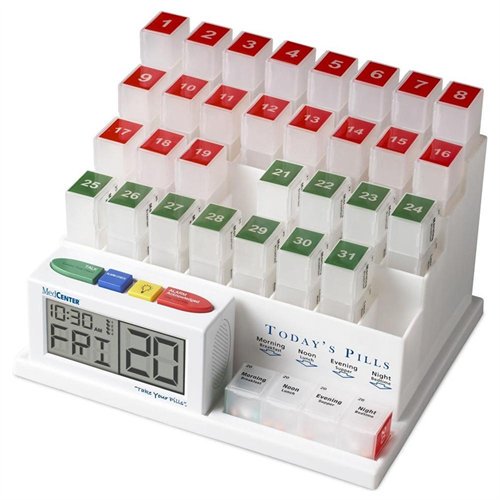
e-Pill MedSmart Plus
The e-Pill MedSmart Voice Pro is a step up from the MedCenter in that it has added security measures with a lock and key to keep out anyone who shouldn't have access to the meds. Also, it can be loaded by a caregiver, and the patient can only have access to pills at their appropriate time. It is Bluetooth enabled and can connect to a mobile app to get easy reminders, alarms and track medications throughout the month.
This pill organizer and dispenser is ideal for seniors who want to live more independently and those with caretakers who want an easy solution to help their patient manage their medication on their own. It's also perfect for those who are hard of hearing as it can have up to 9 alarms throughout the day, paired with a loud voice notification of "it's time to take your medication" and blinking lights.
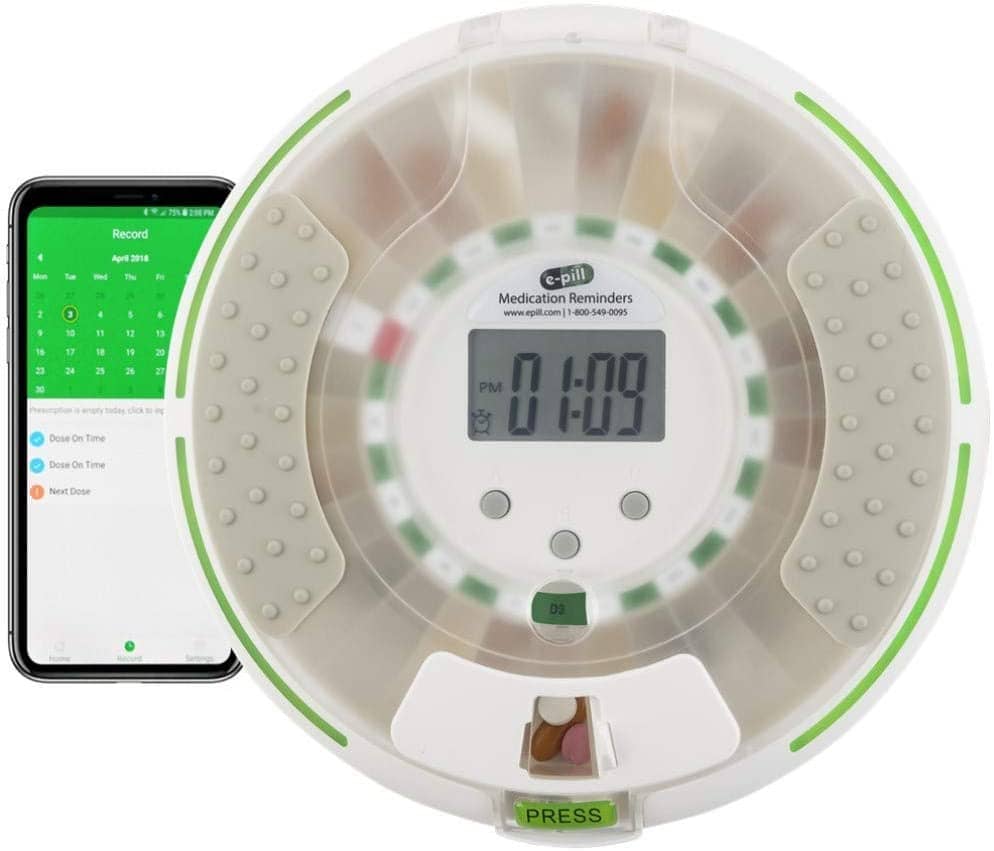
Pria Automatic Pill Dispenser
Pria is a combination medication assistant, video chat, and automated medication dispenser in one. It holds up to 28 days of pills (with 10 in each section) or two weeks if you have morning and night doses. The device gets loaded each month with all the necessary daily pills, then alarms and notifications can be set up and paired with a mobile app.
The application allows family members, caregivers, and physicians to gain access, see that medications were taken, and make necessary adjustments based on results. Users can also get support via the built-in video chat system, and physicians can also reach out via the call feature.
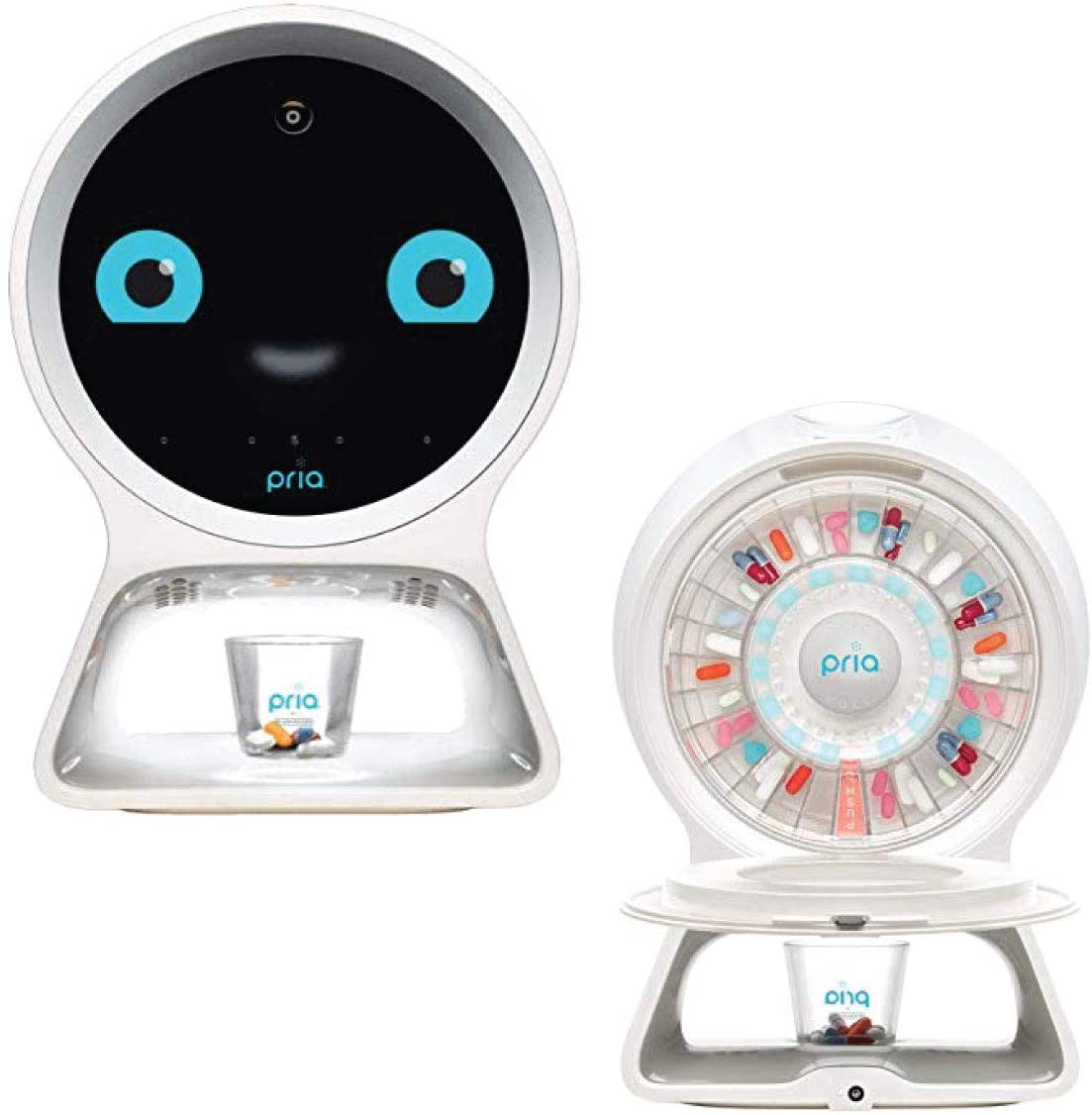
Ōmcare's Home Health Hub®
Ōmcare's Home Health Hub® has combined the convenience of prepackaged medication with immediate access to healthcare providers into one simple package. Not only is medication prepackaged in easy-to-load packs, but they are shipped right to the user's door when needed.
The video feature on our Home Health Hub allows for the user, family members, caregivers, and physicians to check in regularly to allow treatment, medication adjustments, and maintain a virtual relationship. Video check-ins can help ensure that medication is being taken and provide family members with peace of mind.
There are a lot of benefits to automatic pill dispensers. Although they can be expensive upfront, you get what you pay for when it comes to quality and safety.
Keep your loved ones safe, on track, and help manage their chronic illnesses with ease. Reach out to Ōmcare to get started on the next level of medication management with a user-friendly automated pill dispenser.
6+ telling benefits of medication synchronization (for patients)
Medication synchronization helps ensure someone doesn’t miss a dose. But it goes even beyond that; there are many advantages to medication synchronization in addition to limiting trips to the pharmacy. Today, we'll talk about what med sync is, its telling benefits, and why it's so important.
What is medication synchronization and how does it work?
Simply put, medication synchronization is the process of filling prescriptions and collecting them on a single day each month instead of having prescriptions filled as soon as they're written or collected from the pharmacy as patients need them throughout the month.
Instead, all prescriptions are filed one time each month, drastically reducing the number of trips to the pharmacy and added convenience for people taking multiple prescriptions.
When prescriptions are filled and picked up on one day each month (as opposed to when they're refilled), it creates peace of mind for everyone involved. For patients, it means they never have to worry about running out of a needed medication because they can't keep track of all the varying refill dates.
By syncing up 28-day, 30-day, 60-day, and even 90-day scripts, there's a consistent cycle of refills happening at all times. This benefits the pharmacy because they have fewer prescriptions to fill all the time (and eliminates people forgetting to pick things up) which can lead to better adherence data for them as well.
What kinds of medications can be synched?
Patients who take multiple medications for any condition can benefit from medication synchronization. Even patients who take a single prescription that requires regular refills will see benefits, as it reduces trips to the pharmacy and eliminates any concerns about running out of medications due to timing issues.
How does it work?
Pharmacists play a big part in managing prescription syncing. They take the time to review patient prescription lists and accurately formulate a plan to get them synced up. The pharmacist then does a few partial fills to sync up all meds to a single date. Often, they'll also schedule monthly or bi-monthly follow-ups for patients to discuss the medications and ensure everything is on the right track.
What are the benefits of medication synchronization?
The obvious benefit is that patients don't have to go to the pharmacy every month, which reduces stress and eliminates a potential source of anxiety. However, because it's such a big part of what pharmacists are trained to do, medication synchronization also ensures accuracy and attention to detail. It also improves patient health by ensuring they're getting the proper medications at the right time.
Medication synchronization is just another way that pharmacists are making prescription management easier for patients everywhere.
All the benefits of medication synchronization include:
- Eliminating unnecessary repeat trips to the pharmacy each month, which saves time and money.
- Minimizing confusing or conflicting refill dates.
- Reducing delayed or missed doses due to missed refills.
- Pharmacists have more insight and control into patients' medication lists, preventing contraindications, duplicate drugs, and other issues.
- Ensuring the right drugs work with the others and that the proper treatment plans are given.
- Improving medication adherence
- Giving caregivers peace of mind
Medication synchronization is not a new concept. Still, it wasn't until recently that pharmacies started making medication synchronization standard practice.
The average person visits a pharmacy 35 times per year but only sees their doctor four times. By syncing up scripts, pharmacists can cut this number by more than half and allow more convenient prescription refills. Many companies offer mailed prescriptions and automated subscriptions and can help medication adherence rates skyrocket.
Patients don't have to worry about going back and forth between pharmacies anymore—pharmacists make sure they're synchronized, so doctors' instructions are followed as intended. Nor do they have to wait for a pharmacist to reach out for medication refill reminders. And that's a win-win for everyone.
For even more automated prescription management and administration, check out Ōmcare's Home Health Hub. The Home Health Hub offers easy, fast medication management and administration, plus free med delivery in monthly rolls that bundle all necessary medications into one convenient package. Reach out to learn more!


